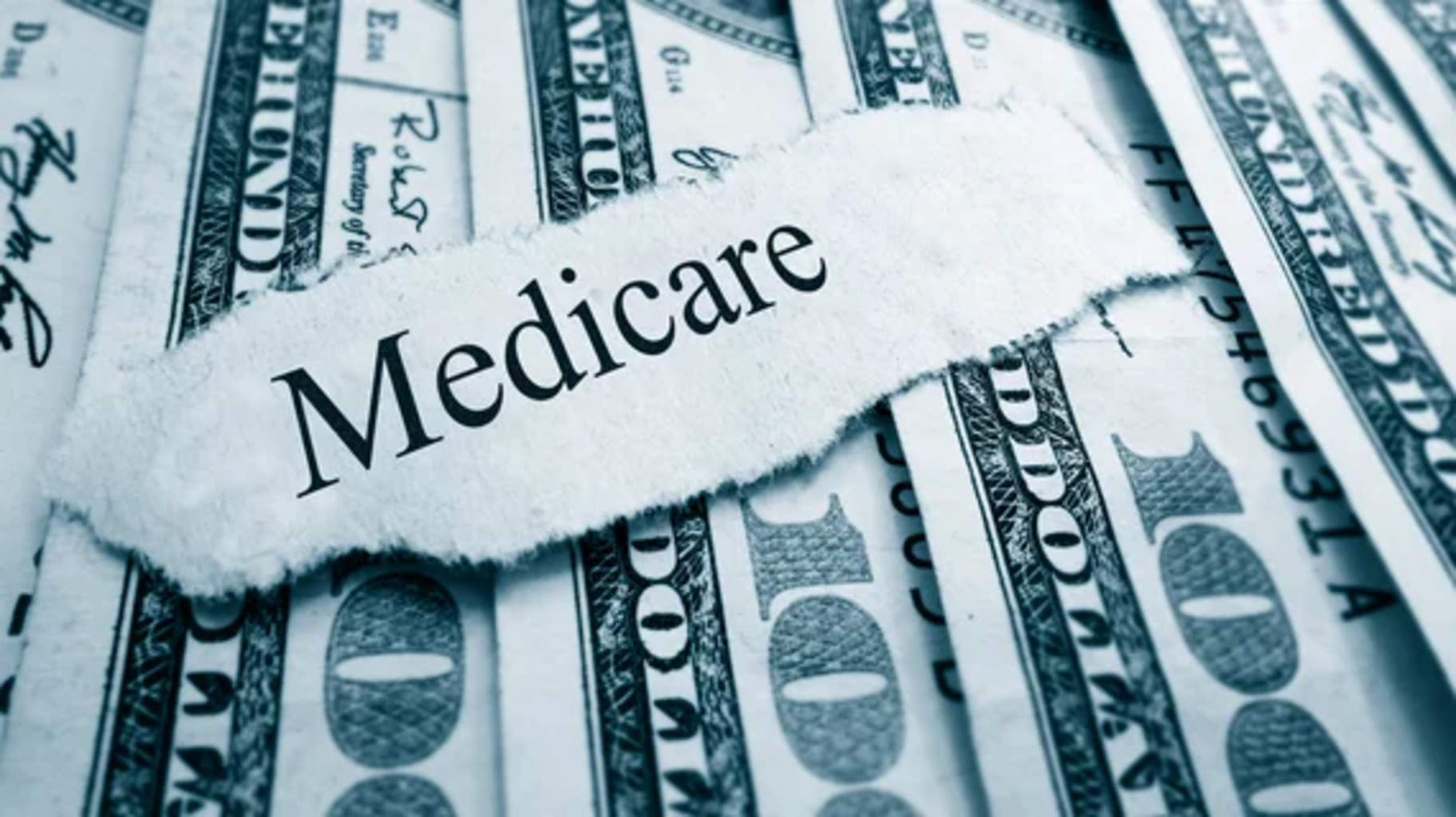Summary: The 2026 Medicare conversion factor introduces significant changes to physician payments, with APM participants receiving $33.59 and non-participants $33.42, marking a 0.55% increase from 2025. This dual payment structure will affect revenue differently across specialties, with primary care benefiting most due to exempt time-based E/M codes from efficiency adjustments. To navigate these changes effectively and optimize your practice's financial planning, consider leveraging SPRY software, which offers comprehensive tools for revenue management and practice efficiency.
After years of consecutive Medicare payment cuts, healthcare professionals finally have reason for cautious optimism. The Centers for Medicare & Medicaid Services (CMS) has proposed the first Medicare payment increase 2026 through the updated Medicare physician fee schedule 2026 conversion factor adjustments.
The proposed 2026 Medicare conversion factor represents a fundamental shift in how Medicare pays physicians, introducing dual payment structures and new efficiency adjustments. For comprehensive analysis of broader Medicare policy changes, see our detailed guide on Medicare Policy Changes 2026.
Understanding these CMS conversion factor 2026 changes is crucial for your practice's financial planning, as they create dramatically different impacts across specialties and practice settings.
Quick Overview [For busy practitioners]
- The 2026 Medicare conversion factor is set at $33.59 for APM participants and $33.42 for non-participants
- This represents a 0.55% overall increase from 2025
Key impact areas:
- Procedural specialties face Medicare efficiency adjustment 2026 cuts (eg: low back pain into procedural vs. time-based services)
- Facility-based services reduced, office-based services increased
- Time-based specialties (primary care, psychiatry) see net gains
Psychiatry practices, for example, often bill for ADHD-related visits using ICD-10 code F90.9 (Attention-deficit hyperactivity disorder, unspecified type). These time-based E/M codes remain exempt from the Medicare efficiency adjustment, ensuring stable reimbursement in 2026.
This comprehensive analysis addresses the seven most critical questions healthcare professionals are searching for regarding the Medicare reimbursement 2026 physicians changes.
Question 1: What exactly is the Medicare Conversion Factor and how does it calculate into your revenue?
The Medicare conversion factor serves as the dollar value multiplier that converts relative value units (RVUs) into actual payment amounts. Understanding this fundamental calculation is essential for revenue planning and answering "How will 2026 conversion factor affect my practice revenue".
{For a refined approach, try: Medicare conversion factor into your calculations}
Basic Payment Formula: Payment = [(Work RVU × Work GPCI) + (PE RVU × PE GPCI) + (MP RVU × MP GPCI)] × Conversion Factor
For qualifying APM participants, the proposed conversion factor increases to $33.59, representing a 3.8% increase from the current $32.35. Non-qualifying APM participants will see their conversion factor rise to $33.42, a 3.3% increase under the physician fee schedule proposed rule 2026.
These increases stem from three key components:
- Statutory MACRA updates: 0.75% for APM participants, 0.25% for others
- Temporary boost: 2.5% increase from the "One Big Beautiful Bill Act"
- Budget neutrality: 0.55% positive adjustment
However, the actual impact on your revenue varies significantly based on your specialty, practice setting, and specific services provided. Primary care physicians are expected to benefit most from these alternative payment model benefits 2026, while procedural and diagnostic specialties may see more modest gains due to the new efficiency adjustment.
Real-world example: A family medicine practice generating 5,000 work RVUs annually could see an additional $1,200-1,800 in revenue, while a radiology practice might experience smaller net gains after efficiency adjustments.

Question 2: How does the 2026 conversion factor differ between APM participants vs. non-participants?
The Medicare physician fee schedule 2026 introduces an unprecedented dual conversion factor system, creating a qualifying APM participants conversion factor difference of $0.17 per RVU between APM and non-APM participants.
The Medicare conversion factor historical trends show this is the first positive adjustment in several years. To qualify as an APM participant, your practice must meet specific participation thresholds in Advanced Alternative Payment Models that require accountability for quality and cost of care. Examples include Medicare Shared Savings Program ACOs, Next Generation ACOs, and certain specialty-focused models.
The APM conversion factor vs non-APM 2026 qualification involves either:
- Payment threshold: Generally 8% of Medicare Part B payments through Advanced APMs
- Patient threshold: Generally 25% of your Medicare patients through Advanced APMs
Need help calculating your APM eligibility and potential revenue impact? Book a consultation with Spry to access specialized APM analysis tools
Question 3: What specific specialties will see the biggest positive/negative impacts?
Specialty impact 2026 Medicare conversion factor changes vary dramatically under the proposed updates, creating clear winners and losers across the physician landscape. Understanding these differences is crucial for practices using a Medicare physician payment calculator 2026 to project future revenue.
Biggest Winners: Time-Based Specialties
Specialties positioned for gains:
- Family Medicine: 2-4% increase (exempt from efficiency adjustment)
- Psychiatry: 1-3% increase (time-based codes protected)
- Clinical Psychology: 3% overall impact
- Geriatric Medicine: 1% overall impact
These specialties benefit because their services are predominantly evaluation and management (E/M) codes, which are exempt from the Medicare efficiency adjustment 2026.
Biggest Losers: Procedural Specialties
Specialties facing headwinds:
- Radiology: -2% overall impact (efficiency adjustment + practice expense changes)
- Orthopedic Surgery: -5% overall impact (procedural codes targeted)
- Pathology: Significant efficiency adjustment impact
- Nuclear Medicine: -1% overall impact
Critical insight: The non-facility vs facility Medicare payment 2026 differential creates different impacts even within the same specialty based on practice setting.
Question 4: What Is the Medicare Efficiency Adjustment and How Does It Affect My Practice?
The Medicare efficiency adjustment 2026 represents CMS's most controversial proposal in the upcoming rule changes. Based on the premise that physician time estimates for many services are "overinflated," CMS proposes reducing work RVUs by 2.5% for non-time-based services under the physician fee schedule proposed rule 2026.
Key details:
- Applies to all codes except time-based services (E/M visits, care management, behavioral health, telehealth)
- 2.5% reduction calculated using Medicare Economic Index (MEI) productivity adjustments from 2022-2026
- Will be implemented every three years going forward
- Affects approximately 8,961 physician services
The efficiency adjustment reflects CMS's criticism of current valuation methodology, which relies on physician surveys with low response rates. The agency argues these surveys overestimate time and intensity required for established procedures, making this a key consideration for any Medicare physician payment calculator 2026 analysis.
Financial impact example: A 3.3% CMS conversion factor 2026 increase becomes roughly 0.8% after the efficiency adjustment for affected specialties.
Question 5: Why Are Facility-Based Medicare Payments Being Cut While Office Payments Increase?
The non-facility vs facility Medicare payment 2026 differential reflects CMS's attempt to address outdated practice expense assumptions. The original methodology assumed physicians maintained separate practice locations even when providing hospital services, but the Medicare reimbursement 2026 physicians updates recognize current practice patterns.
The logic behind the change:
- Steady decline in private practice (from 60% to 31% since 2012)
- Corresponding rise in hospital employment
- Hospital-employed physicians have lower overhead costs
- Avoiding "double payment" for overhead expenses
Under proposed changes, facility-based practice expense RVUs will be reduced to half the amount allocated to non-facility practice expense RVUs, significantly impacting how the 2026 Medicare conversion factor applies across different practice settings.
Real-world implications:
- Chiropractors: 17% cuts for hospital services vs. 2% cuts in offices
- Endocrinologists: 6% increases in offices vs. 10% cuts in hospitals
- Oncologists: Potential shift back to community-based practices
This shift incentivizes independent practice maintenance and may slow hospital employment trends, representing a key factor in alternative payment model benefits 2026 calculations.
Question 6: When Do the 2026 Medicare Conversion Factor Changes Take Effect and What Should I Do Now?
The proposed Medicare physician fee schedule 2026 changes are scheduled for January 1, 2026 implementation, with several critical milestones that will determine "How will 2026 conversion factor affect my practice revenue".
Key Timeline:
- September 12, 2025: Comment period closes
- November 2025: Final rule expected
- December 2025: Implementation preparation window
- January 1, 2026: Changes take effect
Action Steps Before Final Rule
Immediate priorities (Next 30 days):
Financial Impact Analysis
- Calculate specialty impact 2026 Medicare conversion factor projections
- Model facility vs. non-facility service distribution
- Assess Medicare efficiency adjustment 2026 exposure
APM Evaluation
- Review current Advanced APM eligibility for qualifying APM participants conversion factor difference
- Calculate potential 0.5% conversion factor benefit
- Evaluate administrative burden vs. financial gain
Technology Assessment
- Ensure practice management systems can handle dual conversion factors
- Verify RVU tracking capabilities
- Plan for efficiency adjustment monitoring
Strategic Planning
- Consider practice setting optimization
- Evaluate service mix adjustments
- Plan staff training for new payment structures
Struggling with complex revenue impact calculations? Spry's advanced analytics platform provides automated modeling tools specifically designed for the CMS conversion factor 2026 changes.
Question 7: Is the 2026 Medicare Conversion Factor Increase Permanent or Another Temporary Fix?
The 2026 conversion factor increase combines permanent and temporary elements, creating planning uncertainty.
Permanent elements:
- MACRA statutory updates (0.75% APM, 0.25% non-APM annually)
- Efficiency adjustment (every three years)
- Dual conversion factor structure
Temporary elements:
- 2.5% "One Big Beautiful Bill Act" increase (expires December 31, 2026)
Long-term outlook: Without congressional action, physicians could face payment reductions in 2027 as the temporary increase expires. The Medicare Payment Advisory Commission (MedPAC) has recommended tying future updates to the Medicare Economic Index, but Congress hasn't acted.
Planning considerations:
- Treat MACRA updates as baseline assumptions
- Consider temporary increase as one-year benefit
- Prepare for potential 2027 payment reduction
- Monitor congressional action on permanent fixes
Preparing Your Practice for Success in 2026 and Beyond
The 2026 Medicare conversion factor changes represent the most significant shift in physician payment policy in years. While the overall direction is positive after years of cuts, the complexity of Medicare reimbursement 2026 physicians requires careful analysis and strategic planning.
Success factors:
- Sophisticated financial modeling and analytics using a reliable Medicare physician payment calculator 2026
- Strategic APM participation evaluation for alternative payment model benefits 2026
- Operational adjustments for non-facility vs facility Medicare payment 2026 optimization
- Proactive technology infrastructure updates
Consider implementing regular coding audits to ensure diagnosis accuracy for conditions like ICD-10 code R53.1 (Weakness), which often accompanies complex care management cases. Aligning correct ICD-10 coding with CPT and HCPCS service codes will help safeguard reimbursement under the new dual conversion factor structure.
Practices that model these specialty impact 2026 Medicare conversion factor changes now and optimize operations accordingly will be best positioned to thrive under the new payment structure established by the physician fee schedule proposed rule 2026.
Frequently Asked Questions
Q: Will the efficiency adjustment affect all of my procedures? A: No. The 2.5% efficiency adjustment only applies to non-time-based services. E/M codes, behavioral health services, care management, telehealth services, and maternity codes are exempt.
Q: How do I know if I qualify for APM status? A: APM qualification is determined by your participation in Advanced APMs during the performance period two years prior. For 2026 payment, your 2024 participation determines your status.
Q: When will I know my exact payment impact? A: The final rule is expected in November 2025, providing specific details on all RVU changes and final conversion factors.
Q: Can I switch between APM and non-APM status? A: APM status is determined by your actual participation in qualifying models during the performance period, not by choice. You must actively participate in an Advanced APM to qualify.
Q: Will these changes affect commercial payer rates? A: Many commercial payers base their rates on Medicare, but adoption varies by payer and may not occur immediately or proportionally.
This analysis is based on the proposed 2026 Medicare Physician Fee Schedule released July 14, 2025. Final rules may differ based on public comments and CMS's final determinations.
References
- Centers for Medicare & Medicaid Services. (2025, July 14). Calendar Year (CY) 2026 Medicare Physician Fee Schedule (PFS) Proposed Rule (CMS-1832-P). Federal Register.
- American Medical Association. (2025, July 16). Physicians will see Medicare payments rise in 2026. AMA Wire.
- American Society of Clinical Oncology. (2025, July 15). A Nearly 4% Reimbursement Increase in 2026 Medicare Physician Fee Proposal. ASCO Daily News.
- American College of Radiology. (2025, July 17). 2026 Medicare Physician Fee Schedule proposes 3.6% pay bump, permanent remote imaging supervision. Radiology Business.
- Medicare Payment Advisory Commission. (2025, June). Report to the Congress: Medicare Payment Policy. MedPAC.
- American College of Cardiology. (2025, July 31). Efficiency Adjustment Explainer: 2026 Medicare PFS Proposed Rule. ACC Latest in Cardiology.
- Society of Interventional Radiology. (2025, July 16). Medicare Physician Fee Schedule Proposed Rule for 2026. SIR Publications.
Reduce costs and improve your reimbursement rate with a modern, all-in-one clinic management software.
Get a DemoLegal Disclosure:- Comparative information presented reflects our records as of Nov 2025. Product features, pricing, and availability for both our products and competitors' offerings may change over time. Statements about competitors are based on publicly available information, market research, and customer feedback; supporting documentation and sources are available upon request. Performance metrics and customer outcomes represent reported experiences that may vary based on facility configuration, existing workflows, staff adoption, and payer mix. We recommend conducting your own due diligence and verifying current features, pricing, and capabilities directly with each vendor when making software evaluation decisions. This content is for informational purposes only and does not constitute legal, financial, or business advice.










